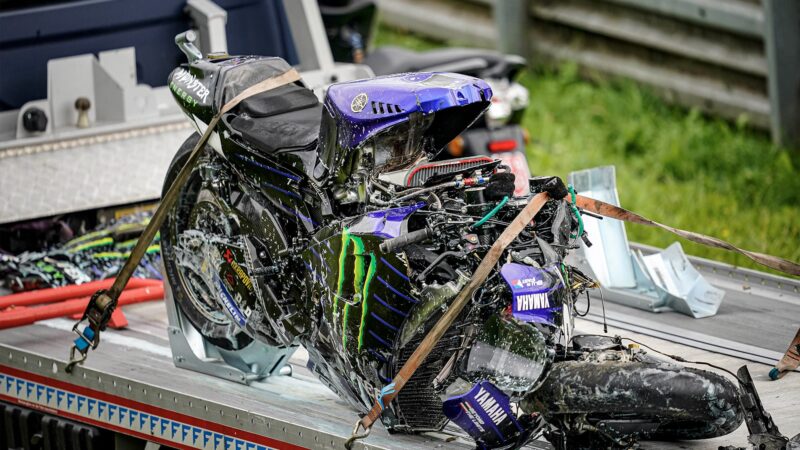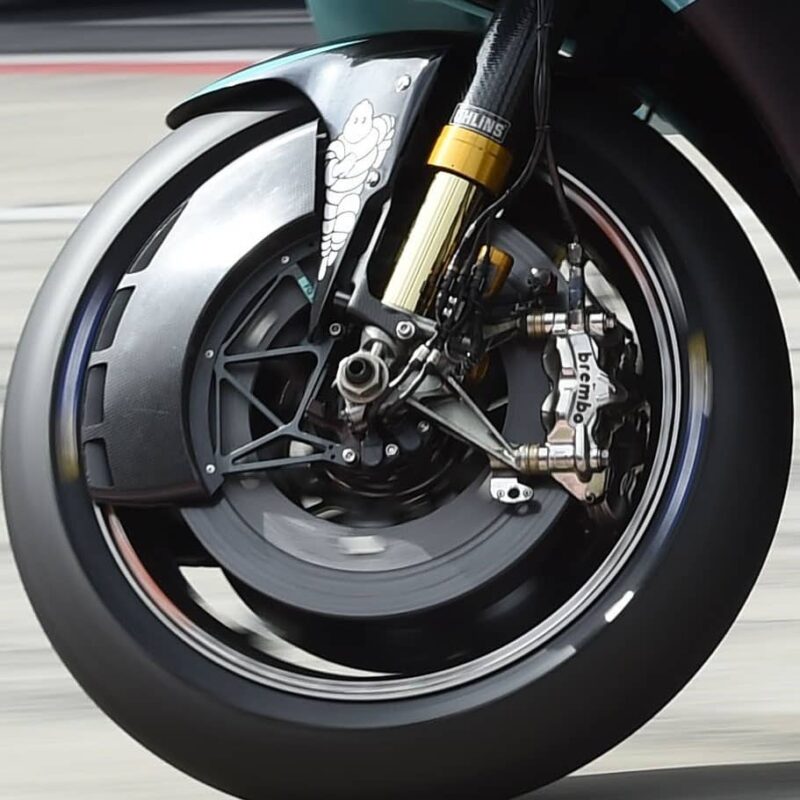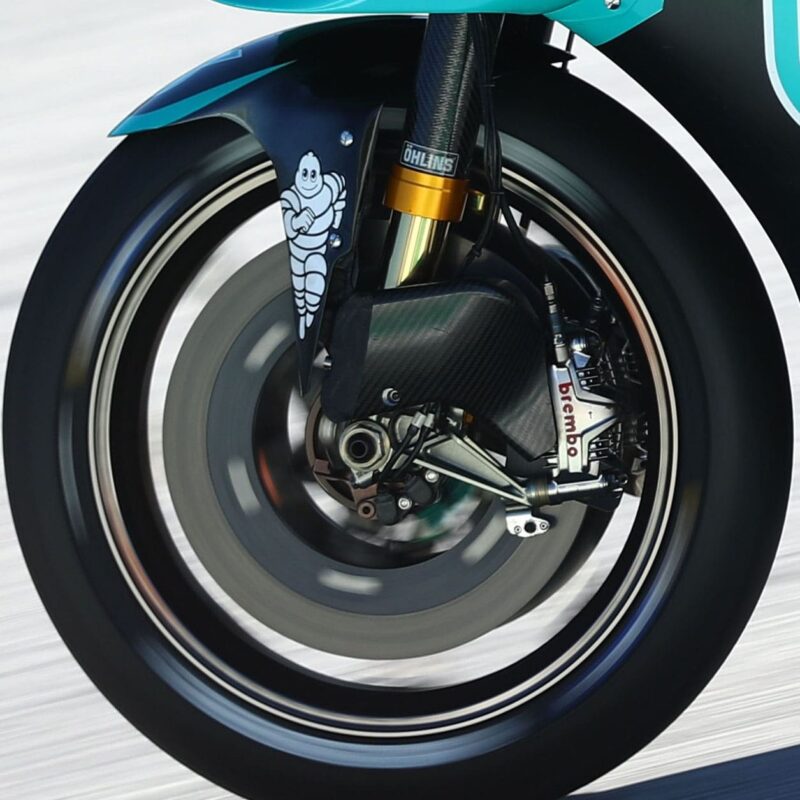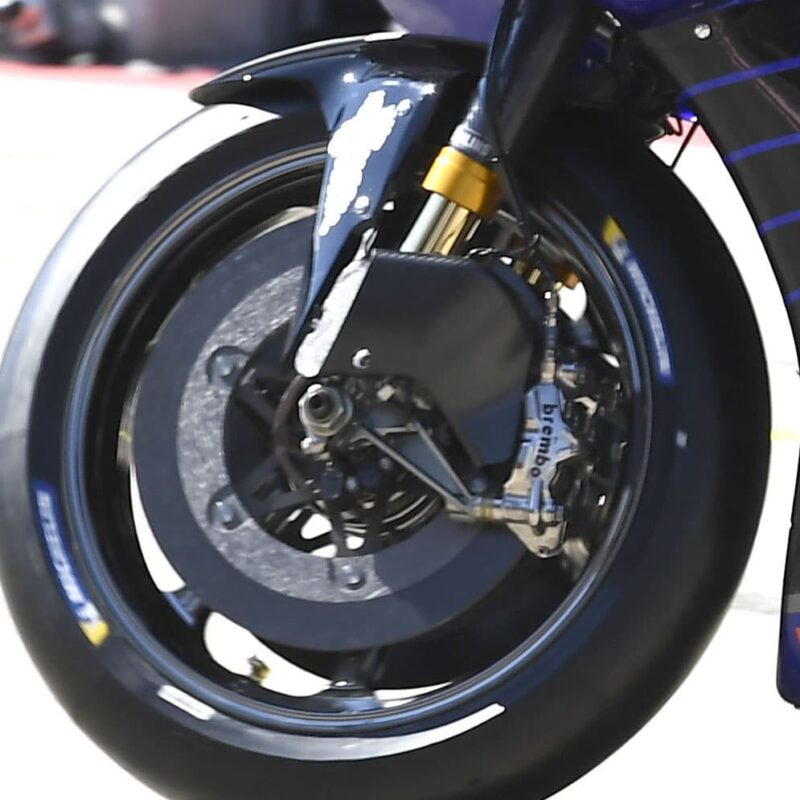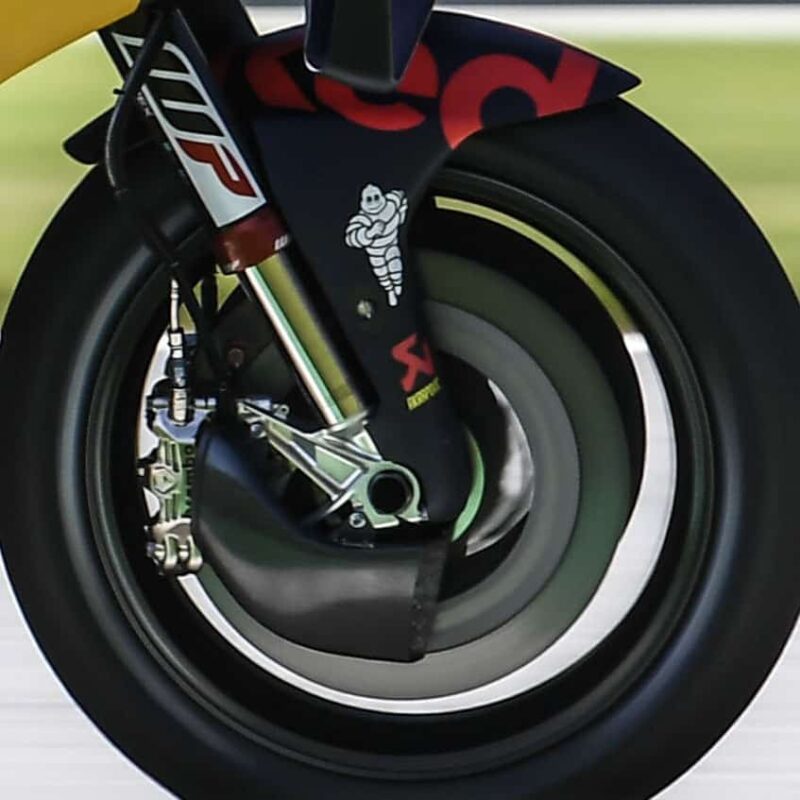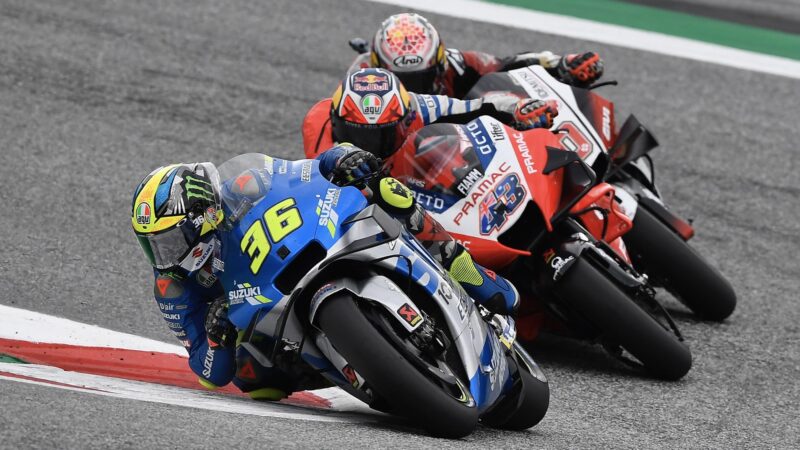And that’s exactly what Mir did. He got past Miller on lap four and rode a blinder of a lap the next time around – the fastest of the race – to put half a second between himself and the pack. With no chance of being attacked by the V4s he was able to carve perfect lines and effortlessly pull away, despite a 4.2mph top-speed handicap against the 194.4mph Ducatis. By the time the red flags came out he was 2.4 seconds ahead, with 16 of 28 laps done.
The Suzuki’s advantage is corner speed, which doesn’t only help in the corners. If a rider can carry 2mph more than his rivals through the corner and into the exit phase that’s 2mph he’s gained that will stay with him down the straight. Plus he’s made that speed without aggressively opening the throttle and pushing almost 300 horsepower through rear the tyre, which helps tyre life.
Also an inline-four’s handling allows it to use the rear tyre more evenly, while a V4 works the shoulder of the tyre harder, because it makes its time by gassing it up on the corner exit. And Michelin’s 2020 rear slick helps in this regard, with more even grip between the edge of the tyre and its traction area.
“The Suzuki is so good in the middle of the corner and they have become better at braking, so now they are very similar to us on the brakes,” explains Ducati’s Dovizioso. “Their acceleration is not as good as ours but they can exit with more speed and when you exit with more speed you don’t have to use the rear tyre so much, because you don’t have to pick up the bike and use maximum throttle, because you’ve made the speed in the middle of the corner, so you use the tyre a bit less, which is why Mir and Alex Rins are so good at end of races.
“We can accelerate much more from the middle of the straight to the end but if you lose some metres in the first part of the straight it takes a lot of metres to gain on the Suzuki. We start to gain in the middle of the straight, but not before, because we are not able to exit like them. They can be fast and more consistent that anybody.”
Next stop is Misano – more corners and fewer straights – which should in theory suit the GSX-RR better. In fact the bike has never had great results there, but Suzuki test rider Sylvain Guintoli tested there in June, which should help Mir and Rins adapt to the new surface quickly. The main issue might be the first-gear hairpin onto the back straight – will they be able to make enough of a difference through that corner to keep the faster bikes behind them on the straight? That could be the crucial factor.
